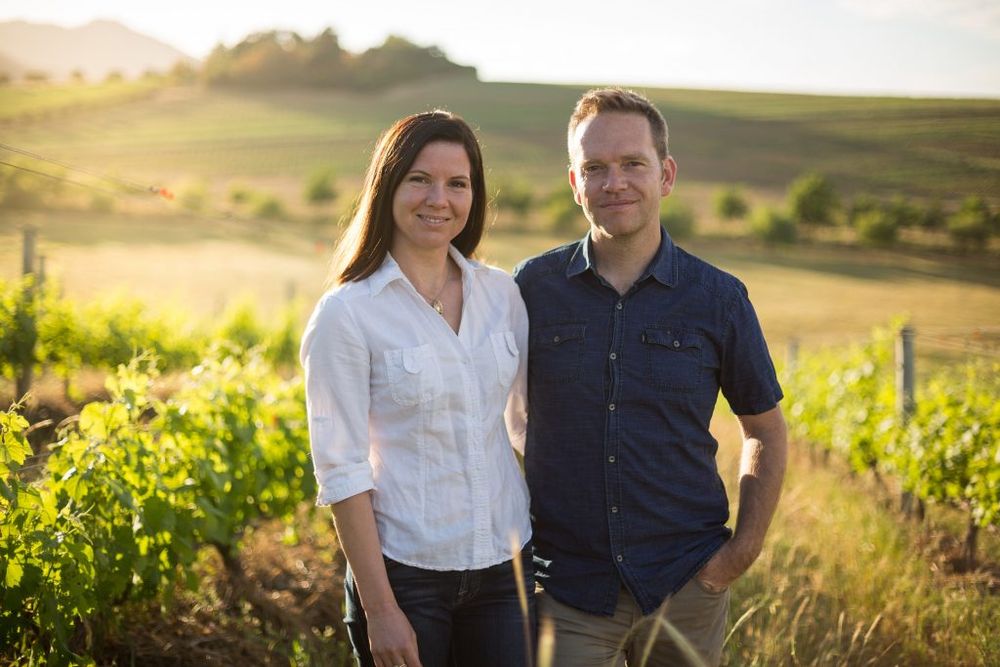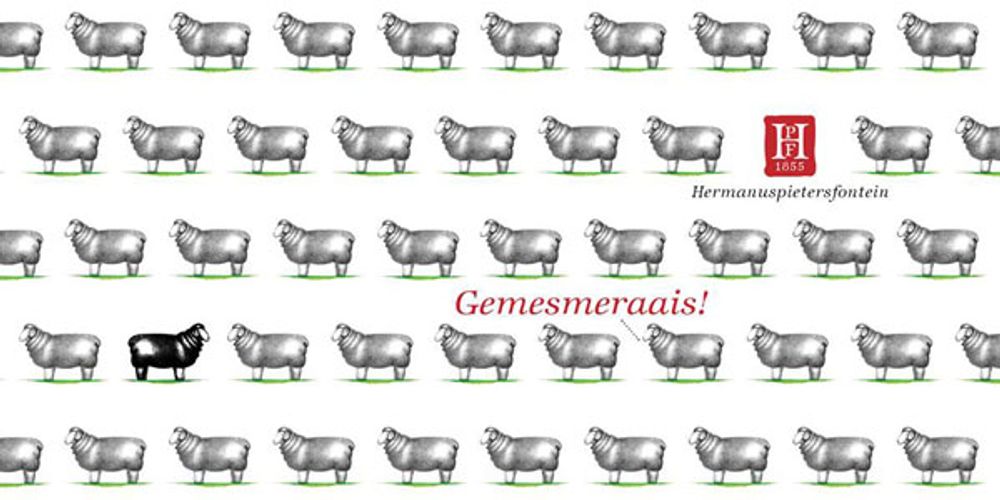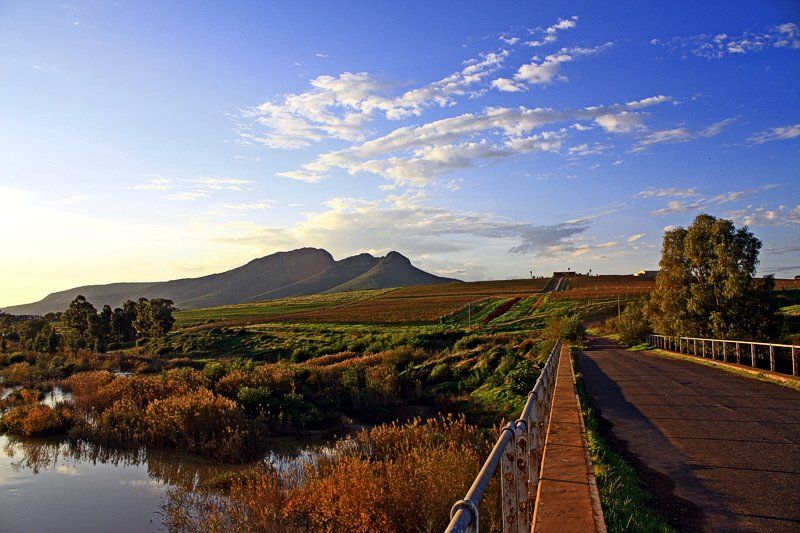Swartland continues to set the agenda in South Africa as its winemakers and producers look to experiment and try new varieties and ways of making wine that push the boundaries of what this influential wine region can achieve.
South African wine has been turning heads around the world in recent years, a trend that is largely due to the young, innovative winemakers who are abandoning the status quo and looking to new grape varieties and sites in their quest to produce wines that are the best expressions of their origin. These winemakers have gained international followings despite their small scale operations, to the point that demand often exceeds supply and wine tasting appointments must be booked far in advance – even in remote Swartland.
Here, the country’s largest region by total land area and smallest in terms of hectares planted is home to a number of pioneering wine producers who are combining their own, rich wine growing heritage with those of more historical regions of the world, most notably the south of France and Portugal.
Swartland: revolutionaries or preservationists?
Swarltand is notably warmer, drier, and offers a more diverse range of agriculture – citrus orchards and farmland aplenty – than the more established coastal regions, where vineyards dominate the landscapes. Long overlooked as a source for quality wine production, the area provides major opportunities for young, up-and-coming winemakers to buy grapes and start a business. Though some have taken the opportunity to buy wine farms of their own, long-term relationships with the farmers, often based on a handshake, are integral to how Swartland producers make wine.

The Mullineuxs: husband and wife and award winning, agenda setting winemakers in the Swartland
Handshakes are how Chris and Andrea Mullineaux started in 2008 and continue to secure most of their grapes. But when larger producers from Stellenbosch and Franschhoek began buying property throughout Swartland they purchased a small farm of their own to secure a better future. At Mullineux, the focus of the portfolio is on two grape varieties that have long been planted in the Swartland: Syrah and Chenin Blanc.
Nicola Tipping, Mullineux’s marketing manager, says Chenin Blanc has “particularly adapted to the climate and the soils simply because it’s been there for so many years”. The winery showcases the grape’s affinity to the different soils of the region through a range of exceptional soil-specific bottlings. “We’re getting a greater sense of regionality,” says Tipping. “If you want to make a mediocre wine, fine. However, to make a great wine one must work with the varieties that work best with the land and producers and consumers alike are becoming aware of this.”
Made for and by Swartland

David and Nadia Sadie have been influenced by the wines of the Languedoc to make Cinsault, Carignan and Grenache wines in Swartland
Although Chenin Blanc is heralded by the majority of producers as a leading white grape variety, especially from old vines, there are still a few differing viewpoints on what other grapes work best. David Sadie of David and Nadia Wines disagrees with the comparison some have made between Swartland and the Northern Rhône, which has led to a focus on Syrah. “There is a lot of relevance for us in Languedoc-Roussillon,” he says. The “warm climate and the purity of fruit” that is expressed in the wines of southern France are an inspiration for his production of Cinsault, Carignan, and, perhaps most importantly, Grenache.
It is in Grenache that Sadie sees the future of his red wine programme, which currently includes Pinotage, Elipidios (a Carignan-based blend), and one single-varietal Grenache. Looking to the future, Sadie hopes to build up the percentage of Grenache in Elipidios so that it will be the dominant variety and to make a range of single-vineyard Grenache wines, to highlight the effect of the distinct sites throughout Swartland.
Sadie follows a more traditional approach in the vineyard and the cellar – picking earlier, less extraction (only one pumpover a day), minimal intervention during fermentation, and no new oak during maturation – and the basis of his winemaking philosophy is rooted in the past: “I look at history and see what’s worked. Chenin Blanc and Grenache have done amazingly well, so these are the grapes I want to focus on. I want to make wines that are unique, that perfectly show their soil type.”
Always experimenting

Eben Sadie has done more than most to help drive the innovation and experimentation in Swartland
Eben Sadie (no relation), of Sadie Family Wines, has been the pioneer for the region over the last 20 years, bringing his international professional experience – 10 years in Priorat and harvests in the Rhône and Languedoc-Roussillon – to the region. The centre of Sadie’s operation continues to be experimentation with grape varieties, and finding what works best with Swartland terroirs. “The future is in Mediterranean varieties,” says winemaker Paul Jordan, and the winery is set to plant Assyrtiko for the first time next year.
Still, the indisputable quality of old vines caught Sadie’s attention in 2009, when he introduced the old-vine series. Maturation does not occur in oak, but clay and amphora vessels, in order to “bring more truth to the site,” according to Jordan. Chenin Blanc, Tinta Barroca, and Grenache are among the grapes used for the programme.
Old-vine Grenache is a rare commodity in South Africa: there are only 11.5 hectares planted in the country which only a handful of producers have access to, including AA Badenhorst, another acclaimed winemaker of the region, Ken Forrester, and Tierhoek in the northerly neighbor, Piekenierskloof.\
Dutch heritage

It’s easier to drink than spell…
Meanwhile, outside the Swartland, winemaker and general manager at Hermanuspietersfrontein, Wilhelm Pienaar, combines heritage and innovation in the production and marketing of the wines. Though a relatively young winery, established in the early 2000s, the labelling reflects the historical importance of the company’s namesake, Hermanus Pieters, who was charged with ensuring the survival of the Dutch language in South Africa after it became a British colony. Today, the language has evolved into Afrikaans, which is used in the naming of the wines as well as in the back label text, regardless of whether they are destined for domestic or export markets. “It’s authentic,” says Pienaar. “It expresses who we are and it gets people from around the world to ask questions about the wine.”
Nearly all of the grapes are sourced from Sondangskloof, which is proudly stated on the label despite being the only winery in the area. The grapes are largely Bordeaux and Rhône grape varieties, but they are “completely different” from the typical styles seen from South Africa in general. This is due to the unique site that differentiates itself from the rest of the Western Cape with higher elevation, more rainfall, and borderline continental climate. For Pienaar, the importance of being true to the site outweighs the market advantage of following the stereotypical big, blockbuster styles set by Stellenbosch.
Even producers in classic Stellenbosch, the most internationally recognised wine region in the country, are tightening up their portfolios and phasing out wines less suited to the sites. L’Ré Burger, winemaker at Stellenzicht winery, says this is a result of a shift in domestic consumer demand: the South African wine drinker is starting to understand what wines work where and how to determine quality as well as value. “A Pinot Noir from Stellenbosch doesn’t sell as well anymore,” says Burger, “and so producers are phasing out those grape varieties that are not so well suited to the sites and climate of the region.”
All of this makes the South African wine scene an exciting one to follow. With quality rising and points of difference between regions becoming clearer, South Africa is ready to show the world what it’s capable of.
































